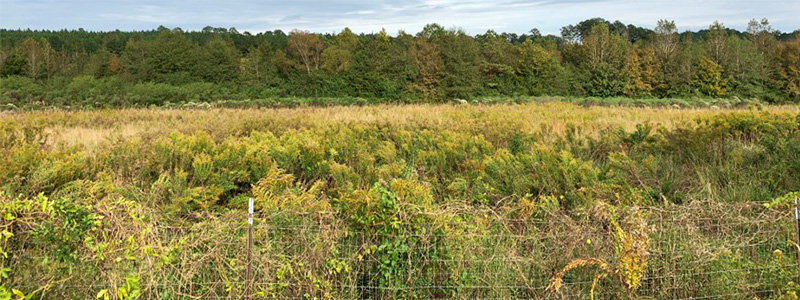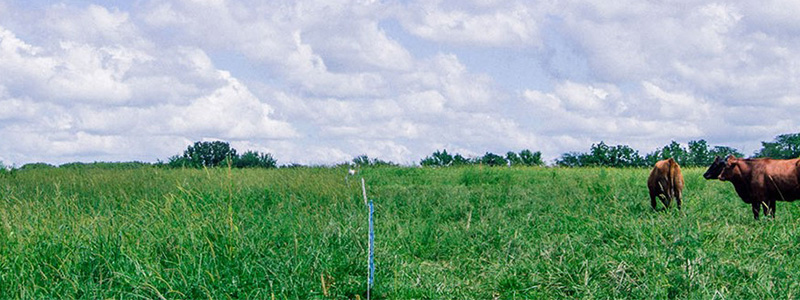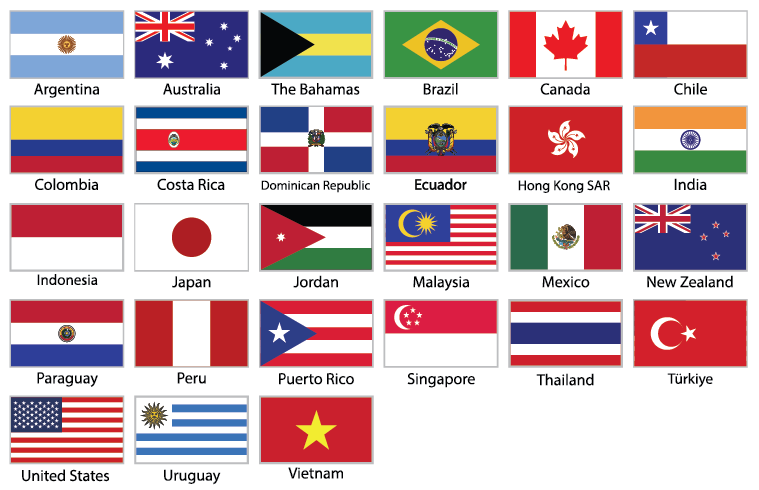While our focus remains on the welfare of farm animals, Certified Humane® certification is complementary to regenerative systems, including Regenerative Organic Certified, ‘Certified Regenerative’ Beef by Greenham, and other individual programs.
Regenerative agricultural practices actively improve the environment and soil carbon sequestration and are a key tool for the future of agriculture in combatting climate change. Intentionally incorporating animals into a pasture system can enrich the soils, promote plant growth, and increase carbon sequestration bringing damaged pasture back to life. Responsible grazing management, part of the Certified Humane® program requirements, will not damage or deplete natural resources and the environment.


The Certified Humane® program verifies farm animal welfare practices that are a critical piece of a complete regenerative agriculture system. Certified Humane® standards ensure these animals are not overcrowded and they are offered the right grasses for their species and the region. Grazing habits are managed by rotating animals around a pasture to verdant areas with plant life at the right stage of their growth cycle for grazing and maximum nutrient benefit. This is known as Rotational Grazing and done correctly, it will nourish the animals and stimulate long term pasture growth, naturally holding carbon in the soil.
What some Certified Humane® producers are saying about their Regenerative Agricultural and Sustainable practices worldwide:
(Select map icons or follow links below to read more about Certified Humane® producers: Applegate • Greenham • Ingleby Farms • Fazenda da Toca • Korin • Apricot Lane Farms • Hart Dairy • New Barn Organics • Niman Ranch • Vital Farms • White Oak Pastures • Farm Fresh Malaysia • Pete and Gerry’s • Teton Waters Ranch • Idyll Farms • Redwood Hill Farm)
‘Certified Regenerative’ Beef by Greenham
With more than 160 years in the Australian red meat industry, Greenham is a leader in producing premium-quality beef that is good for our consumers, animals, and the planet.
The Greenham Beef Sustainability Standard provides a practical set of indicators and measures for producers to follow. Consistent with globally recognised definitions of regenerative farming, the standard takes a holistic approach to regenerative beef production, which incorporates four key themes.

The standard has been endorsed by Certified Humane®, and environmental and agriculture specialists, Integrity Ag & Environment.
CLICK HERE to view the Greenham Beef Sustainability Standard
CLICK HERE to read more about ‘Certified Regenerative’ Beef by Greenham
Comments and resources for further study from the Certified Humane® Scientific Committee
Brenda Coe, Ph.D., The Pennsylvania State University, USA
“Livestock production can, and should, be an important part of a sustainable food system. Cattle, sheep, goats, swine, and poultry can be raised on pastures that would otherwise be unsuitable for growing crops, can eat crop residues and other by-products that are often wasted, and produce manure that can be used as fertilizer. Continued efforts to prevent soil and pasture degradation by integrating intensive livestock farming with agricultural crops, controlling animal stocking rates and doing rotational grazing, conducting soil testing and properly fertilizing soil along with pest and weed control will improve soil health, allowing improved pasture recovery and resilience. Advances in animal genetics, veterinary care, feed quality, and grazing systems (rotational and adaptive multi-paddock grazing) are improving soil and pasture quality and also helping shrink the climate footprint of livestock operations. Regenerative livestock production also helps develop more resiliency in the land to climate challenges like droughts, fires, or flooding, benefiting farmers and communities as well as the entire food system.”
Anne Fanatico, PhD Appalachian State University, USA
“Animals are a key part of regenerative agriculture. Grazing animals and livestock help manage the extensive grasslands and rangelands in the Midwest and western states. Forage plants sequester carbon from the atmosphere in living plants and underground in the form of roots and organic matter. In the East, where there is sufficient precipitation for tree cover, agroforestry systems are appropriate for grazing livestock. Trees in particular sequester carbon. Farm animals, such as swine and poultry, are particularly important for nutrient cycling. Animals can eat things that humans do not such as crop residue and by-products. Animals contribute to biodiversity, which is key in resilience. They release the energy and nutrients stored in plants, so it can flow or cycle throughout the farm ecosystem (Gliessman, 2015. Agroecology: The Ecology of Food Systems). Access to the outdoors, pasture, and range is important animal welfare. Perennial pasture and grasslands are ways to grow food without tillage and keeping the carbon in the soil where it belongs.”
Brittany J. Howell, Ph.D., PAS, Fort Hays State University, USA
“Proper grazing and pasture management can reduce unwanted invasive plant species that can greatly impact the water availability in pastures. Invasive trees like red cedars can use up to 42 gallons of water per day depending on tree stem diameter and other factors. Also, grazing animals are part of a natural ecosystem, recycling carbon, adding nutrients to the soil through urine and feces, and removing older plant material which stimulates growth of new material (like nature’s lawnmower). And when it comes to the end of the animal’s life, the animal can be composted to enrich the soil and provide the most environmentally friendly way to utilize those nutrients to regrow plants.”
Photo credits:
Example of an untended pasture, not contributing to environmental improvement; courtesy of NCAT (ATTRA.NCAT.org)
Example of what a pasture can become, WITH the inclusion of grazing animals and proper management; courtesy of NCAT (ATTRA.NCAT.org)




Regenerative and Sustainable Agriculture
Posted: May 17, 2022 by Certified Humane®
While our focus remains on the welfare of farm animals, Certified Humane® certification is complementary to regenerative systems, including Regenerative Organic Certified, ‘Certified Regenerative’ Beef by Greenham, and other individual programs.
Regenerative agricultural practices actively improve the environment and soil carbon sequestration and are a key tool for the future of agriculture in combatting climate change. Intentionally incorporating animals into a pasture system can enrich the soils, promote plant growth, and increase carbon sequestration bringing damaged pasture back to life. Responsible grazing management, part of the Certified Humane® program requirements, will not damage or deplete natural resources and the environment.
The Certified Humane® program verifies farm animal welfare practices that are a critical piece of a complete regenerative agriculture system. Certified Humane® standards ensure these animals are not overcrowded and they are offered the right grasses for their species and the region. Grazing habits are managed by rotating animals around a pasture to verdant areas with plant life at the right stage of their growth cycle for grazing and maximum nutrient benefit. This is known as Rotational Grazing and done correctly, it will nourish the animals and stimulate long term pasture growth, naturally holding carbon in the soil.
What some Certified Humane® producers are saying about their Regenerative Agricultural and Sustainable practices worldwide:
(Select map icons or follow links below to read more about Certified Humane® producers: Applegate • Greenham • Ingleby Farms • Fazenda da Toca • Korin • Apricot Lane Farms • Hart Dairy • New Barn Organics • Niman Ranch • Vital Farms • White Oak Pastures • Farm Fresh Malaysia • Pete and Gerry’s • Teton Waters Ranch • Idyll Farms • Redwood Hill Farm)
‘Certified Regenerative’ Beef by Greenham
With more than 160 years in the Australian red meat industry, Greenham is a leader in producing premium-quality beef that is good for our consumers, animals, and the planet.
The Greenham Beef Sustainability Standard provides a practical set of indicators and measures for producers to follow. Consistent with globally recognised definitions of regenerative farming, the standard takes a holistic approach to regenerative beef production, which incorporates four key themes.
The standard has been endorsed by Certified Humane®, and environmental and agriculture specialists, Integrity Ag & Environment.
CLICK HERE to view the Greenham Beef Sustainability Standard
CLICK HERE to read more about ‘Certified Regenerative’ Beef by Greenham
Comments and resources for further study from the Certified Humane® Scientific Committee
Brenda Coe, Ph.D., The Pennsylvania State University, USA
“Livestock production can, and should, be an important part of a sustainable food system. Cattle, sheep, goats, swine, and poultry can be raised on pastures that would otherwise be unsuitable for growing crops, can eat crop residues and other by-products that are often wasted, and produce manure that can be used as fertilizer. Continued efforts to prevent soil and pasture degradation by integrating intensive livestock farming with agricultural crops, controlling animal stocking rates and doing rotational grazing, conducting soil testing and properly fertilizing soil along with pest and weed control will improve soil health, allowing improved pasture recovery and resilience. Advances in animal genetics, veterinary care, feed quality, and grazing systems (rotational and adaptive multi-paddock grazing) are improving soil and pasture quality and also helping shrink the climate footprint of livestock operations. Regenerative livestock production also helps develop more resiliency in the land to climate challenges like droughts, fires, or flooding, benefiting farmers and communities as well as the entire food system.”
Anne Fanatico, PhD Appalachian State University, USA
“Animals are a key part of regenerative agriculture. Grazing animals and livestock help manage the extensive grasslands and rangelands in the Midwest and western states. Forage plants sequester carbon from the atmosphere in living plants and underground in the form of roots and organic matter. In the East, where there is sufficient precipitation for tree cover, agroforestry systems are appropriate for grazing livestock. Trees in particular sequester carbon. Farm animals, such as swine and poultry, are particularly important for nutrient cycling. Animals can eat things that humans do not such as crop residue and by-products. Animals contribute to biodiversity, which is key in resilience. They release the energy and nutrients stored in plants, so it can flow or cycle throughout the farm ecosystem (Gliessman, 2015. Agroecology: The Ecology of Food Systems). Access to the outdoors, pasture, and range is important animal welfare. Perennial pasture and grasslands are ways to grow food without tillage and keeping the carbon in the soil where it belongs.”
Brittany J. Howell, Ph.D., PAS, Fort Hays State University, USA
“Proper grazing and pasture management can reduce unwanted invasive plant species that can greatly impact the water availability in pastures. Invasive trees like red cedars can use up to 42 gallons of water per day depending on tree stem diameter and other factors. Also, grazing animals are part of a natural ecosystem, recycling carbon, adding nutrients to the soil through urine and feces, and removing older plant material which stimulates growth of new material (like nature’s lawnmower). And when it comes to the end of the animal’s life, the animal can be composted to enrich the soil and provide the most environmentally friendly way to utilize those nutrients to regrow plants.”
Photo credits:
Example of an untended pasture, not contributing to environmental improvement; courtesy of NCAT (ATTRA.NCAT.org)
Example of what a pasture can become, WITH the inclusion of grazing animals and proper management; courtesy of NCAT (ATTRA.NCAT.org)
Category: Announcements, Farm Animal Welfare Guide, Leaders of Certified Humane®